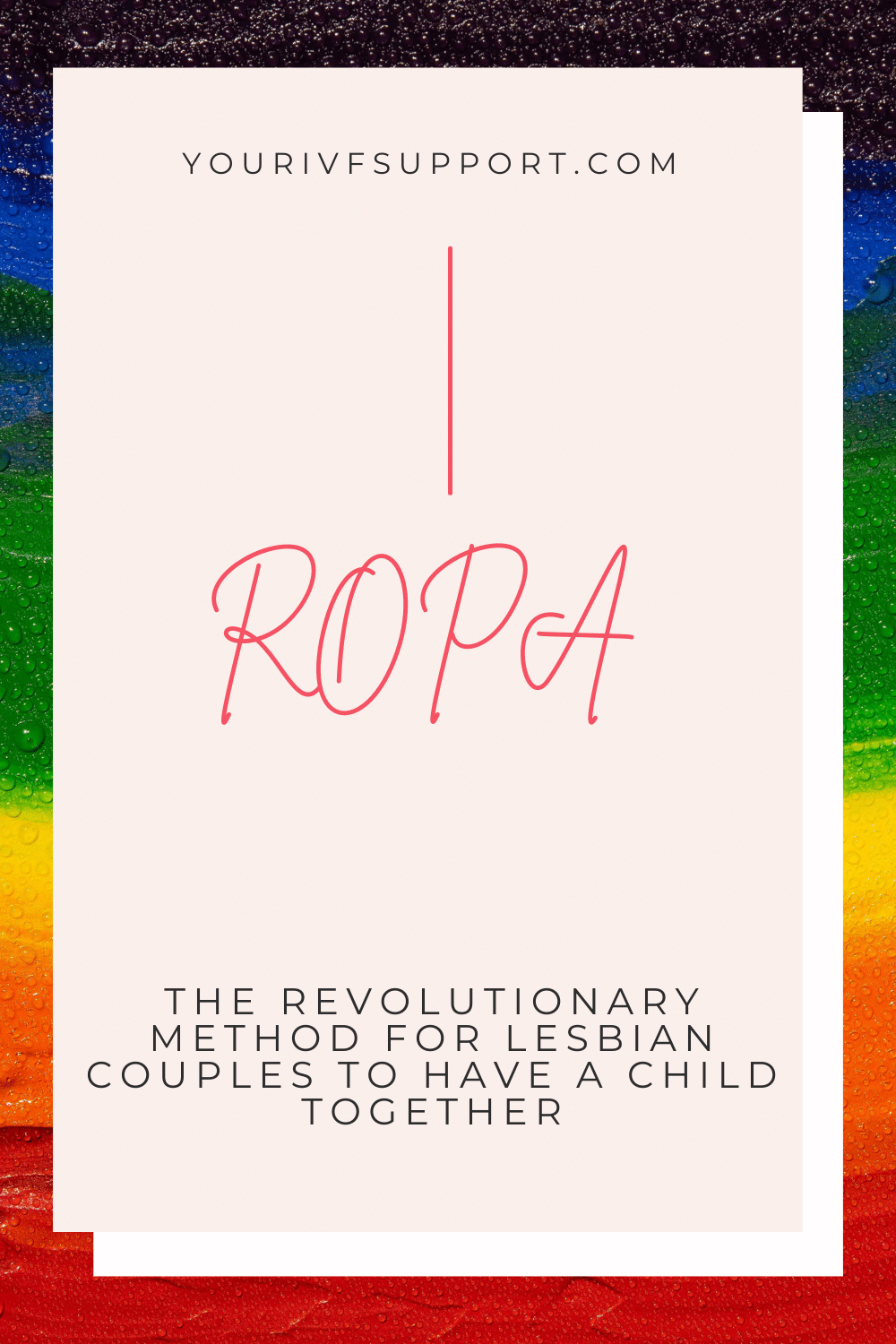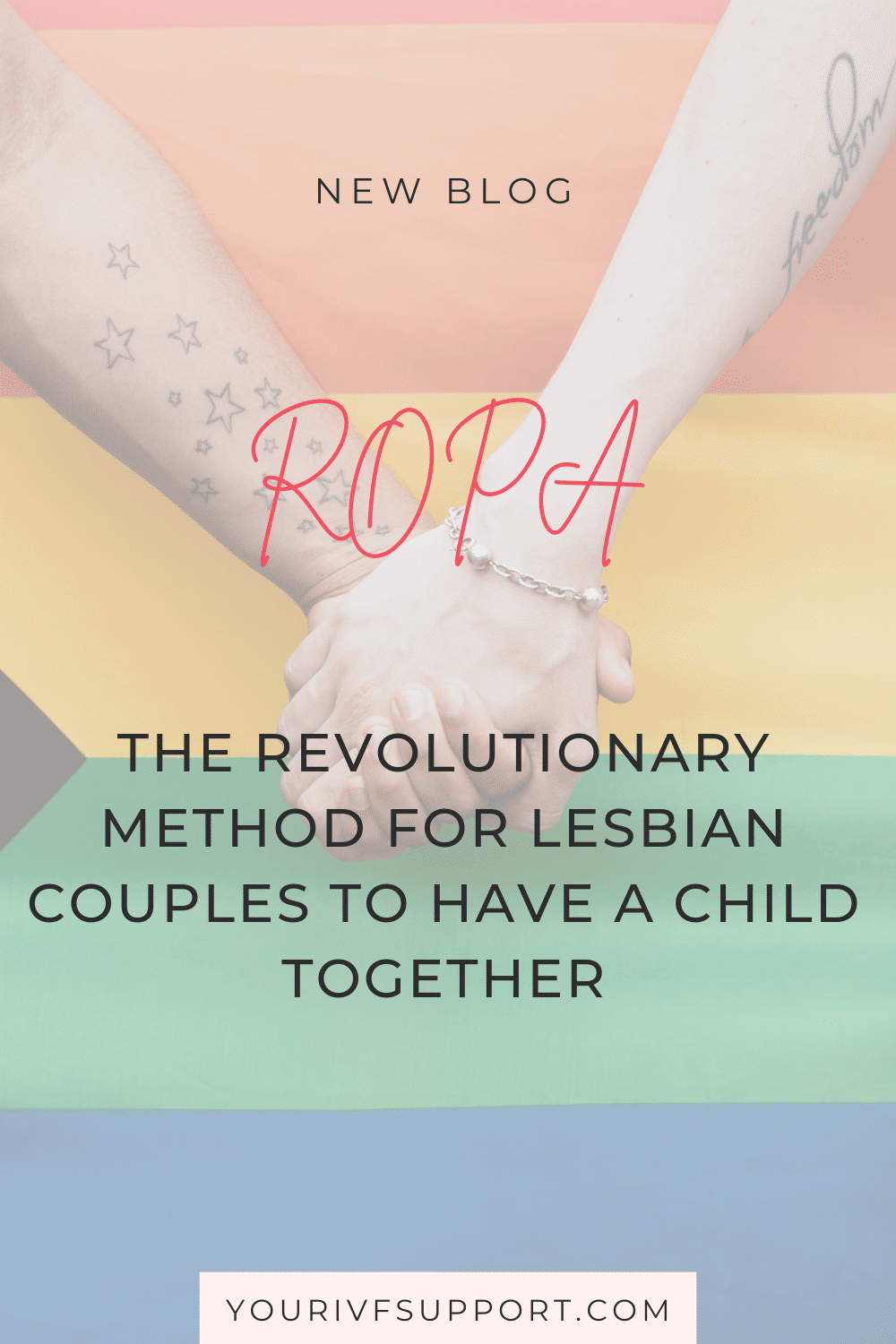Starting a family is a lifelong dream for many people. But for lesbian couples who want to be biologically linked, it has long been a challenge. With the ROPA method (Reception of Oocytes from Partner), also known as the shared motherhood method, it is now possible for one partner to donate her eggs and the other partner to carry the child. This revolutionary method has changed the lives of many couples who want a biological connection to their child.
In this article, I will explain the ROPA method in detail, from the steps in the process to the challenges and possible risks. I will also give you tips on choosing the right fertility clinic and look at the legal aspects of ROPA.
What is ROPA?
ROPA is a method of assisted reproduction that allows lesbian couples to become biological parents together. In ROPA, one partner donates her eggs and the other carries the child.
Unlike traditional in vitro fertilisation (IVF), where the fertilised egg is implanted in the woman's womb, in ROPA the fertilised egg is implanted in your womb. This means that you and your partner can play an active role in the pregnancy and birth of your child.
ROPA is a relatively new technique and not all clinics offer it. If you are considering ROPA, you should take your time to find a clinic that is experienced in using this method and that is suitable for you and your partner.
One of the main advantages of ROPA is that both mothers have a biological relationship with their child. The child has the genetic characteristics of both of you, which is very important for many couples. In addition, ROPA can be a way for lesbian couples to build a stronger relationship with each other as you are involved in the process of pregnancy and birth together.
However, it is important to note that ROPA does not guarantee a successful pregnancy. As with all forms of assisted reproduction, there are challenges and possible risks with ROPA, including the possibility of miscarriage or multiple pregnancy. You and your partner should always carefully consider the risks and benefits before deciding to undergo ROPA treatment.
ROPA is an exciting way for lesbian couples to have a biological connection with their child. If you would like to know more about ROPA, talk to your doctor or a clinic that does ROPA.
Why is ROPA often the fertility treatment of choice for lesbian couples?
Lesbian couples may find it difficult to have a biological connection with their child. However, there is a method of assisted reproduction that allows lesbian couples to become biological parents together: the ROPA method.
One of the main advantages of the ROPA method is that both partners have a biological connection to their child. With ROPA, one partner donates her eggs and the other carries the child. This means that the child has genetic characteristics from both parents and therefore has a biological link to both partners.
In addition, the ROPA method can be a way for lesbian couples to build a stronger relationship with each other as they are involved in the process of pregnancy and birth together. The partner who carries the child can form a strong bond with the unborn child, while the partner who donated her eggs has the opportunity to actively participate in the pregnancy and see the child as her own biological union.
Another advantage of ROPA is that it gives both partners the opportunity to consider their individual wishes and priorities. For example, the younger partner may donate her eggs if she is more likely to produce healthy eggs, while the older partner may carry the child if she can have a more stable pregnancy.
ROPA is an exciting way for lesbian couples to make a biological connection with their child and build a stronger relationship with each other. If you are a lesbian couple who would like to start a family, you should consider the ROPA method and speak to a doctor or fertility clinic who has experience of using this method.
ROPA is a method of assisted reproduction that enables lesbian couples to become biological parents together. With ROPA, one partner donates her eggs while the other partner carries the child.
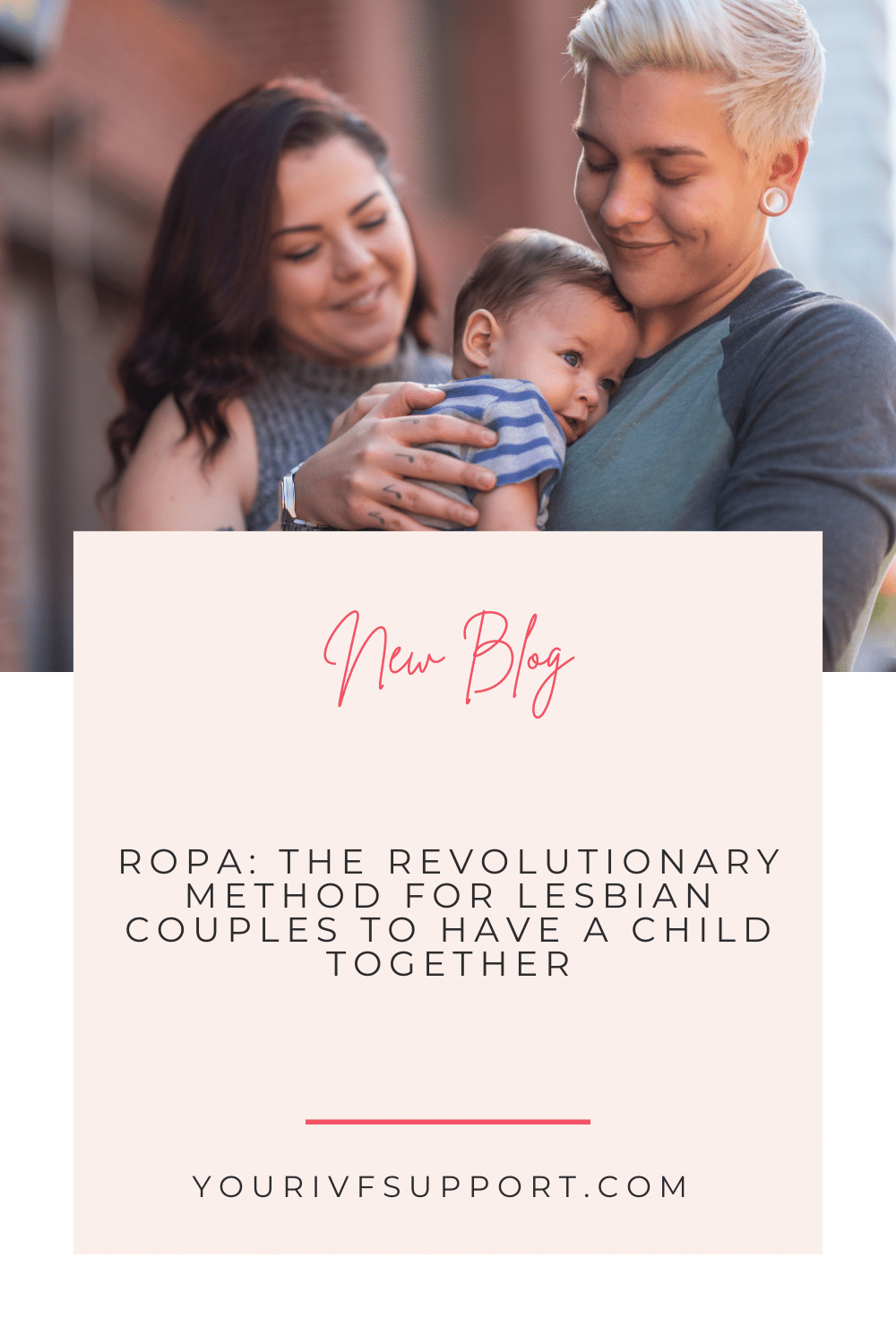
The ROPA process
The ROPA process is an important step for lesbian couples who want to have a child together. The process involves a number of steps that need to be followed carefully to ensure a successful pregnancy.
How does the ROPA method work?
The ROPA method is a form of assisted reproduction that enables lesbian couples to become biological parents together. But how does it work?
The ROPA process begins with hormone stimulation of the donor partner's ovaries to produce several mature eggs. These eggs are then retrieved in a medical procedure and fertilised in the laboratory with the donor's sperm. The fertilised eggs are then allowed to develop into embryos.
Next, the partner who will carry the child is given hormones to thicken her uterine lining. The embryo is then transferred to her womb to grow and develop. If all goes well, the partner will carry the baby and give birth.
An important aspect of the ROPA method is that both partners can play an active role in the pregnancy and birth of their child. The partner who carries the child will play the main role in the pregnancy and birth, while the partner who donated her eggs can play an active role in the pregnancy and act as the biological mother of the child.
What steps are needed?
If you and your partner are interested in using the ROPA method to have a baby together, there are a number of steps you will need to take. These steps include choosing a fertility clinic, hormone stimulation, egg collection, fertilisation of the eggs in the laboratory, embryo transfer and pregnancy.
An important aspect of the ROPA method is that both partners can play an active role in the pregnancy and birth of their child. There is a protocol for both partners to donate their eggs and receive hormone stimulation. There is also the option of freezing any eggs and embryos that are left over to allow for another pregnancy at a later date.
The first steps in the ROPA method are choosing a clinic and hormone stimulation of the donor partner's ovaries. This stimulation is usually done by injecting hormones to produce several mature eggs. Once the ovaries have been stimulated, the eggs are collected in a medical procedure and fertilised in the laboratory with the donor's sperm.
Once fertilised, the eggs are allowed to develop into embryos. The partner who will carry the child is then given hormones to thicken her womb lining. The embryo is then transferred to her womb to grow and develop.
If all goes well, the partner will carry the baby and give birth. However, it is important to note that, as with all forms of assisted reproduction, there are challenges and potential risks associated with the ROPA method.
What are the advantages and challenges?
The ROPA method is an innovative form of assisted reproduction that allows lesbian couples to have a biological child together. However, as with all forms of assisted reproduction, there are both benefits and challenges to using the ROPA method.
A major advantage of the ROPA method is that both partners can play an active role in the pregnancy and birth of their child. The partner who carries the child has the opportunity to form a deeper bond with the child, while the partner who donated her eggs can act as the child's biological mother. If both women are on hormones and donate eggs, this can also increase the number of eggs retrieved and improve the success rate of treatment.
Another advantage of the ROPA method is that the chances of a successful pregnancy are higher because the eggs can come from a younger and healthier woman. If both women are under hormone stimulation and donate eggs, this can also increase the number of eggs retrieved and improve the success rate of treatment.
However, the ROPA method has its challenges. The process is complex and requires careful planning and preparation. If both partners are stimulated, the donor and recipient protocols must be carefully coordinated. It is also possible for one woman to be both donor and recipient, which can further complicate the process.
Another risk is that multiple pregnancies can occur if several embryos are transferred into the partner's uterus at the same time. Multiple pregnancies can increase the risk of complications during pregnancy and childbirth.
It is also important to note that the ROPA method, like any form of assisted reproduction, does not guarantee pregnancy or a healthy baby. There is always a risk of miscarriage and complications during pregnancy.
Another disadvantage of the ROPA method is the extra cost involved. Hormone stimulation, egg retrieval, fertilisation and embryo transfer can be expensive, and there may be additional costs for egg and embryo storage.
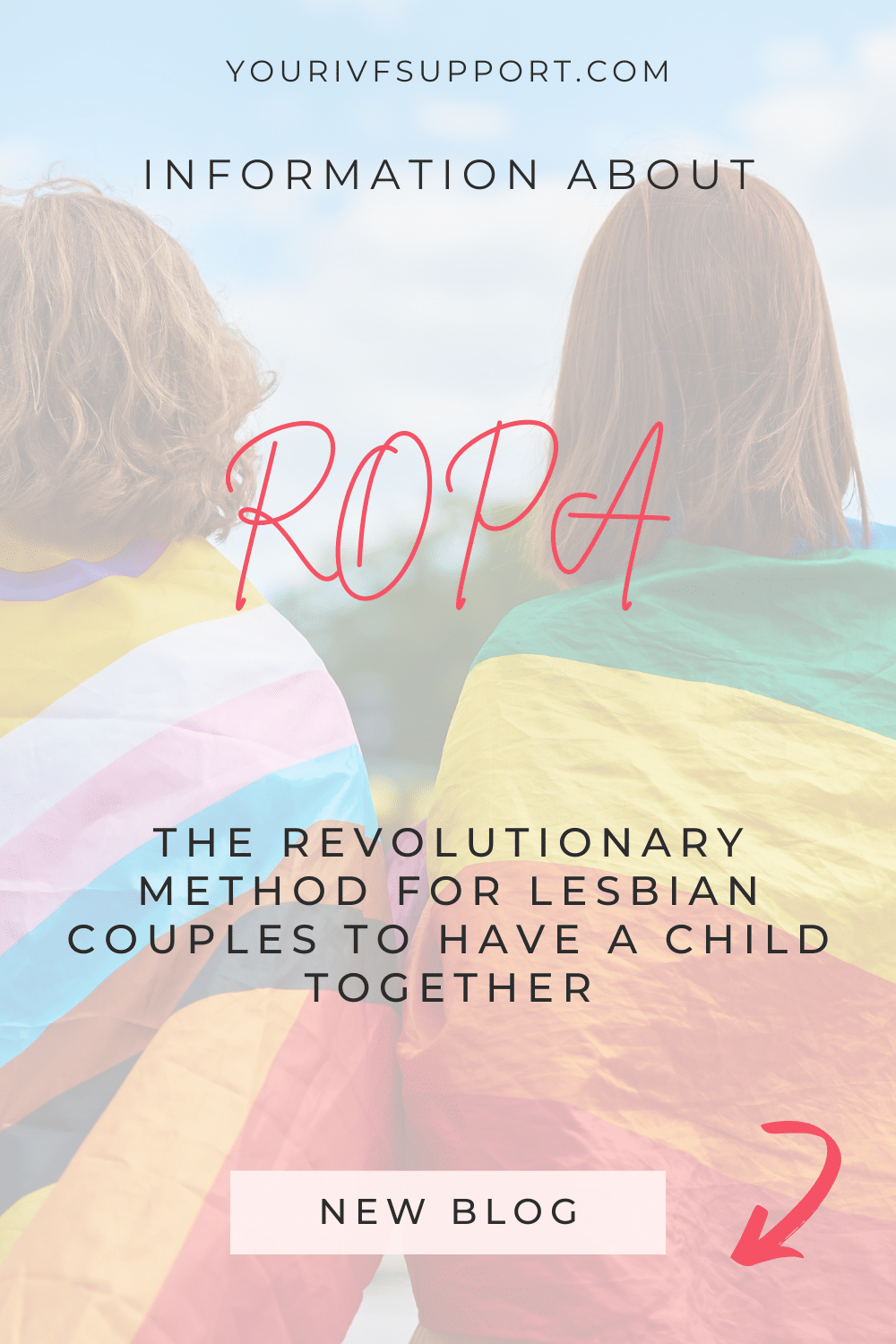
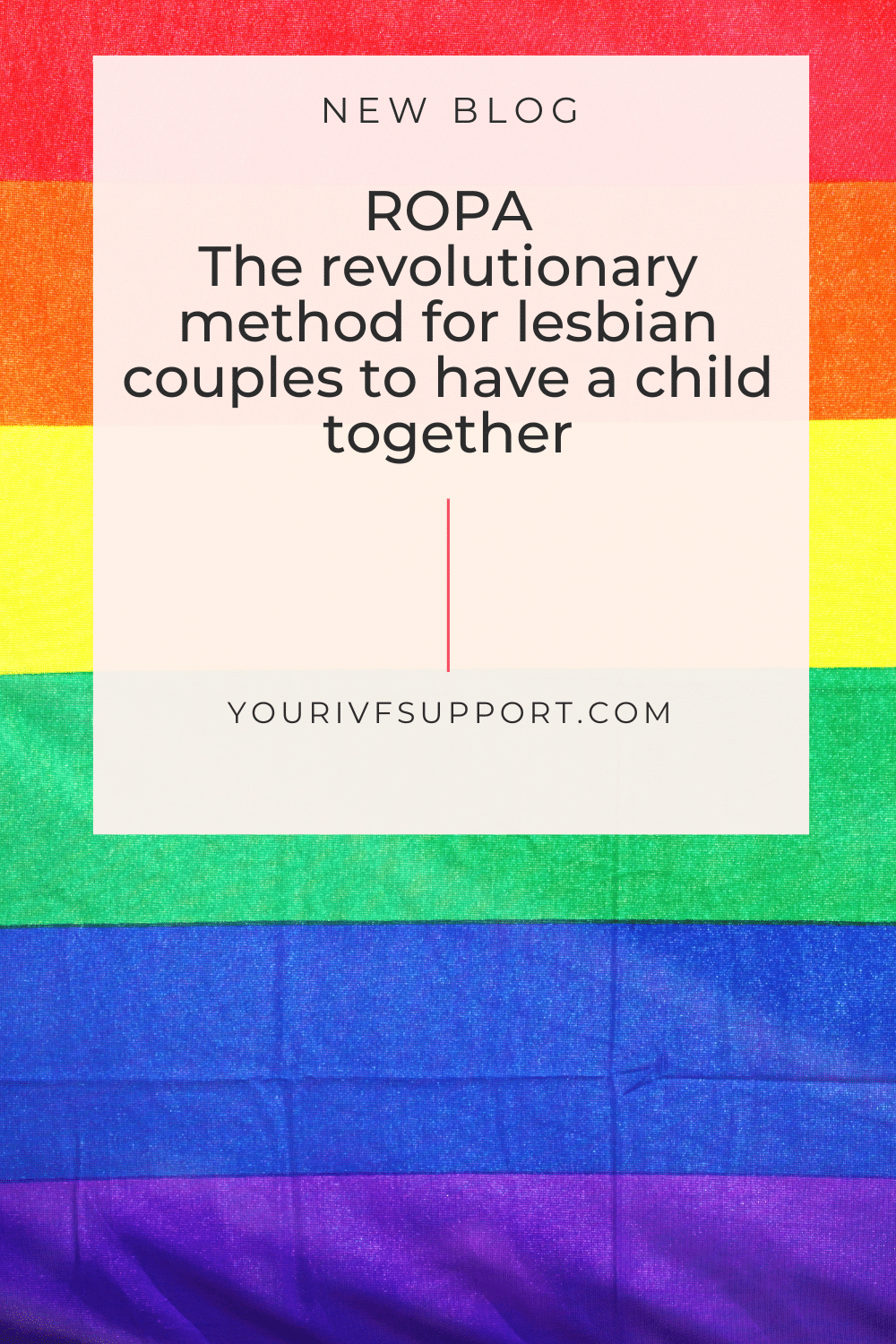
Egg donation in ROPA
Egg donation is an important part of the ROPA process, which enables lesbian couples to have a biological child together. In this section, we will look in more detail at egg donation as part of the ROPA process and consider the different aspects of this technique.
How does egg donation work in ROPA?
Egg donation is a central part of the ROPA method, which enables lesbian couples to have a biological child together. In this process, one of the partners donates her eggs, which are then fertilised with sperm from the donor or the recipient's partner. The embryo is then transferred to the womb of the other partner, who will carry the child.
Below are the basic steps of egg donation at ROPA:
Egg donation:
One of the partners is hormonally stimulated to increase the number of eggs she produces. These eggs are then collected and prepared for fertilisation.
Sperm donation:
Sperm is either provided by a donor.
Fertilisation:
The eggs are fertilised with the sperm, either in a petri dish in the laboratory or by intracytoplasmic sperm injection (ICSI). In this technique, a single sperm is injected directly into an egg.
Embryo transfer:
The embryo is transferred into the womb of the partner who will carry the child.
It is important to note that egg donation in ROPA is carried out in a similar way to other forms of assisted reproduction. However, there may be additional challenges and risks, especially if both partners donate their eggs and are hormonally stimulated. It is therefore important to seek advice from an experienced specialist and to carefully consider the pros and cons of ROPA before deciding on treatment.
Can both women donate eggs?
With the ROPA method, also known as shared motherhood, both women can play an active role in the pregnancy and birth of their child. One woman donates her eggs and the other woman carries the baby. However, there are cases where both women want to donate their eggs.
In principle, it is possible for both women to donate their eggs to create one or more embryos. If both women donate their eggs, each embryo will be created from one egg from one woman and another egg from the other woman.
However, it is important to note that the decision to have both women donate their eggs depends on several factors. These include the women's age, health and physical condition, as well as the recommendations and guidelines of the medical team carrying out the ROPA treatment.
In addition, both women may need hormone stimulation to produce a sufficient number of eggs. This can be a challenge, especially if both women have hormonal imbalances or other health problems. Ovarian stimulation can also cause unwanted side effects such as bloating, pain or discomfort.
It is important that couples interested in the ROPA method seek advice from an experienced specialist and carefully weigh up the pros and cons before making a decision.
What are the criteria for selecting an egg donor?
Egg donation is an important part of the ROPA method, which enables lesbian couples to have a biological child together. Choosing the right egg donor is crucial to the success of the treatment and the health of the future child.
Ideally, the partner is the first choice as an egg donor. However, if neither partner has suitable eggs, an outside donor may be considered. In some countries it is even possible to use known or related women as donors.
When a lesbian couple uses embryo donation, it is no longer the ROPA method as there is no egg donation from a partner. Instead, the couple chooses embryo donation, i.e. an egg donor and a sperm donor, whether open, anonymous or known donors.
Another option is embryo adoption, where embryos are adopted from another couple who already have children. This is an anonymous donation of frozen embryos that are no longer needed by the biological parents. This option can be a good and cheaper alternative for couples who do not want to use egg or sperm donation.
It is important to note that each option has its own advantages and disadvantages and couples should seek advice from an experienced professional to make the best choice for their individual needs.
In addition to the availability of suitable eggs, there are other important criteria that should be considered when choosing an egg donor. These include
- Health requirements: The egg donor should be in good physical and mental health and have no known genetic conditions or diseases that could affect the future child.
- Physical characteristics: If the egg recipient has certain physical characteristics that she would like to pass on to her child, the egg donor should have similar characteristics.
- Compatibility with the sperm or embryo donor: If the sperm or embryo donor has already been selected, the egg donor should be compatible with the donor to ensure a higher chance of successful fertilisation.
- Personal preferences: Finally, the couple's personal preferences and needs should be considered. Some couples may prefer to use a close relative or friend as an egg donor, while others may choose to donate anonymously.
It is important that couples interested in the ROPA method carefully consider the pros and cons of egg donation and seek advice from an experienced specialist to make the best choice for their individual needs.
"ROPA is a method of assisted reproduction that enables lesbian couples to become biological parents together. With ROPA, one partner donates her eggs while the other partner carries the child."
Sperm donation with ROPA
The ROPA method is a revolutionary way for lesbian couples to have a child together. The method allows one partner to donate her eggs and the other partner to carry the child. But where do the sperm for fertilisation come from? This is where sperm donation comes in. In this section, we will take a closer look at ROPA sperm donation and highlight all the important aspects that couples may need to consider when making their decision.
In the ROPA method, the sperm for fertilisation is obtained from a donor bank. The selection of the donor and the sperm is an important step in preparing for treatment. Donor banks are subject to strict regulations and safety measures to ensure the quality and health of the donor's sperm.
The partner who will carry the child is given hormone treatment to stimulate her eggs and encourage the development of multiple eggs. Once the eggs are ready, sperm donation is performed by fertilising the donor's sperm with the other partner's eggs in a medical facility.
The fertilised eggs are then grown in a laboratory until they are ready to be transferred into the womb of the donor partner. The embryo is transferred to the uterus using IVF (in vitro fertilisation) treatment to make pregnancy possible.
It is important to note that the sperm used in the ROPA method comes from an external source and that couples can choose the donor and the sperm. The choice of donor bank and the criteria used to select the donor and the sperm depend on the individual preferences and needs of the couple.
The selection of the sperm donor is an important step in the preparation of the ROPA method. Here are some criteria to consider when selecting a sperm donor:
Health and family history:
Donor banks carefully check the donor's health and family history to ensure that he is free of hereditary or infectious diseases.
Phenotypic characteristics:
Couples can choose certain phenotypic characteristics such as skin colour, eye colour, hair colour and height.
Education and personality:
Some donor banks offer information about the donor's education and personality. This may be important for some couples.
Donor anonymity:
Donor banks offer different options for donor anonymity. Some couples prefer an anonymous donor, while others prefer an open donor, where the child can contact the donor in the future.
Success rate:
The success rate of the donor bank in fertilising the eggs is an important factor to consider when choosing a donor.
It is important for couples to be careful when choosing a sperm donor and to take time to consider their needs and wishes. A good donor bank will provide couples with comprehensive information and help them choose a donor and sperm.
Preparing for treatment
Preparing for ROPA treatment requires careful planning and organisation to ensure that all the necessary steps and requirements are met. In this section we will look at the different steps involved in preparing for ROPA treatment. We will discuss the different aspects of preparation, such as choosing a fertility clinic, medical tests and hormone treatment, to ensure that couples are best prepared for treatment.
The ROPA treatment process
The ROPA treatment process consists of several steps and requires careful planning and coordination between the couple and their doctor. The main steps in the treatment process are outlined below:
Choosing a fertility clinic:
Choosing a fertility clinic is an important first step in ROPA treatment. It is important to choose a clinic that has experience in treating lesbian couples and has qualified medical staff. I am an expert in this area and can help you with your search and choice.
Medical tests:
Before ROPA treatment can begin, both women will need to undergo medical tests to ensure that they are suitable for treatment. These tests include blood tests, ultrasound scans and hormone analysis.
Hormone treatment:
If both women donate eggs and are stimulated, they will start hormone treatment to stimulate the ovaries and increase egg production. This is done through daily hormone injections over a period of 10-14 days.
Egg retrieval:
When a woman's eggs are mature, egg retrieval is performed. This is a surgical procedure carried out under general anaesthetic. The eggs are then fertilised with donor sperm in the laboratory.
Embryo transfer:
An embryo transfer is usually carried out on the fifth day of blastocyst development. Only one embryo is usually transferred to reduce the risk of multiple pregnancies and increase the success rate.
Pregnancy test:
Two weeks after the embryo transfer, a pregnancy test is done to see if the recipient is pregnant.
It is important that couples work closely with their doctor throughout the process to ensure that all steps of ROPA treatment go smoothly.
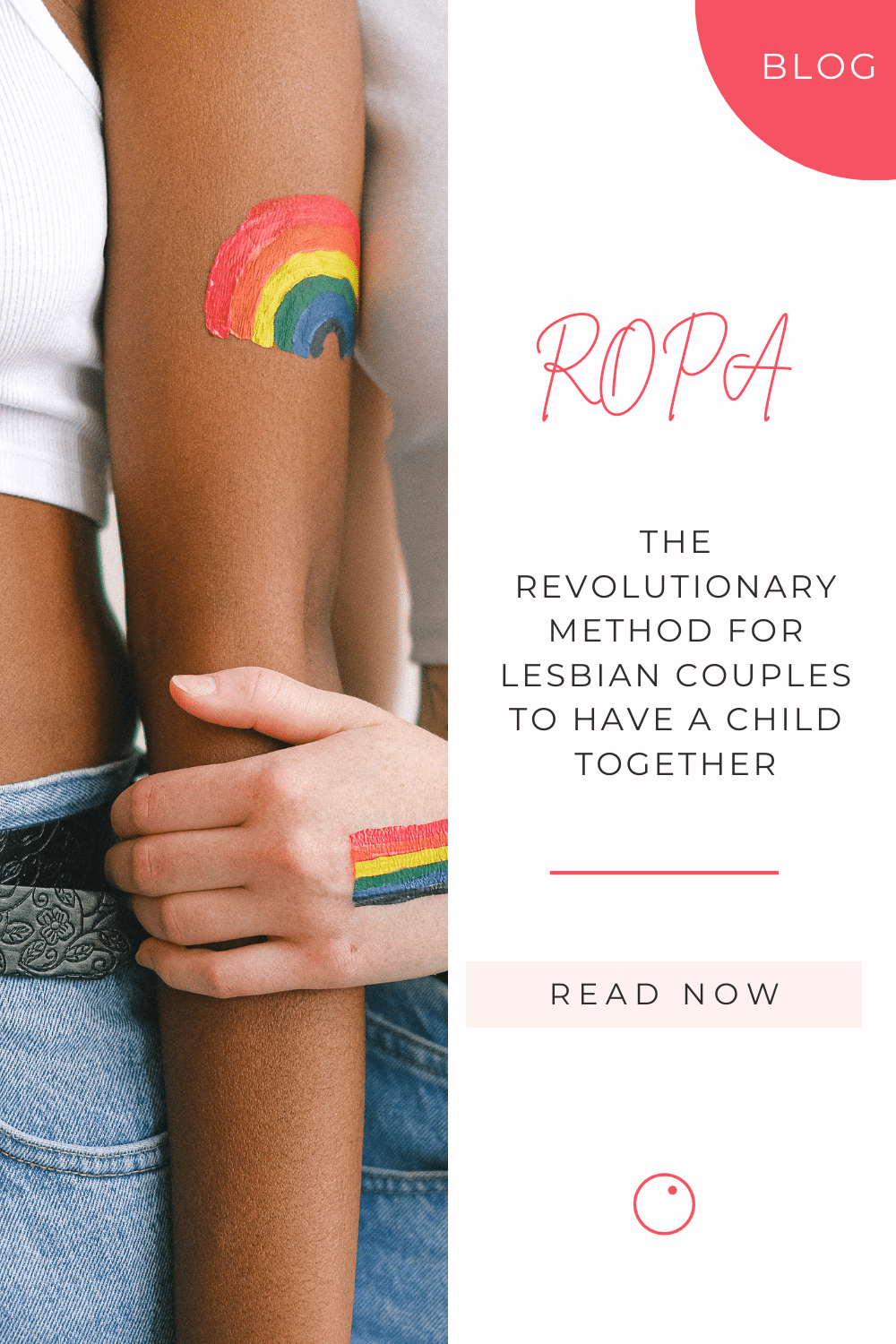
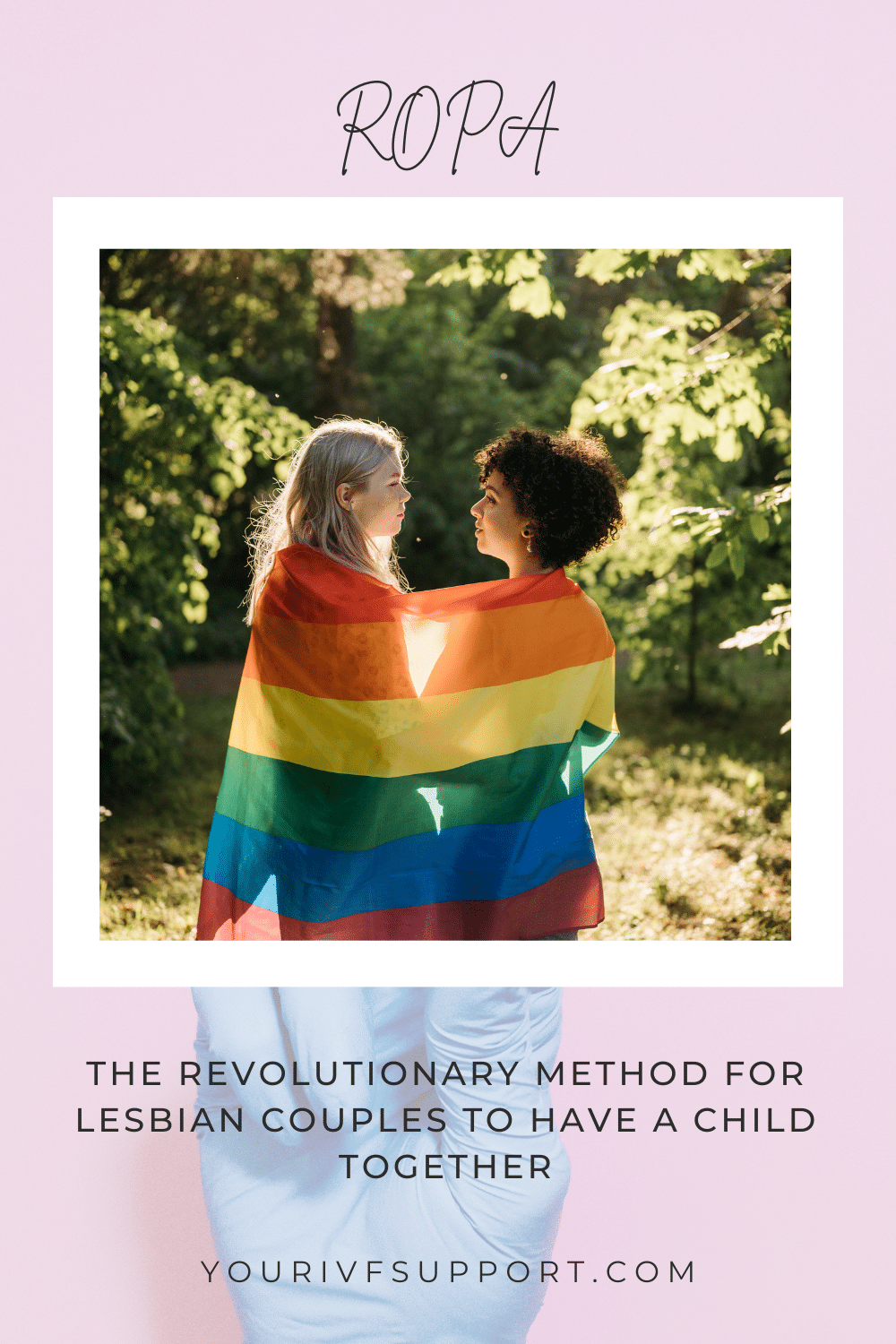
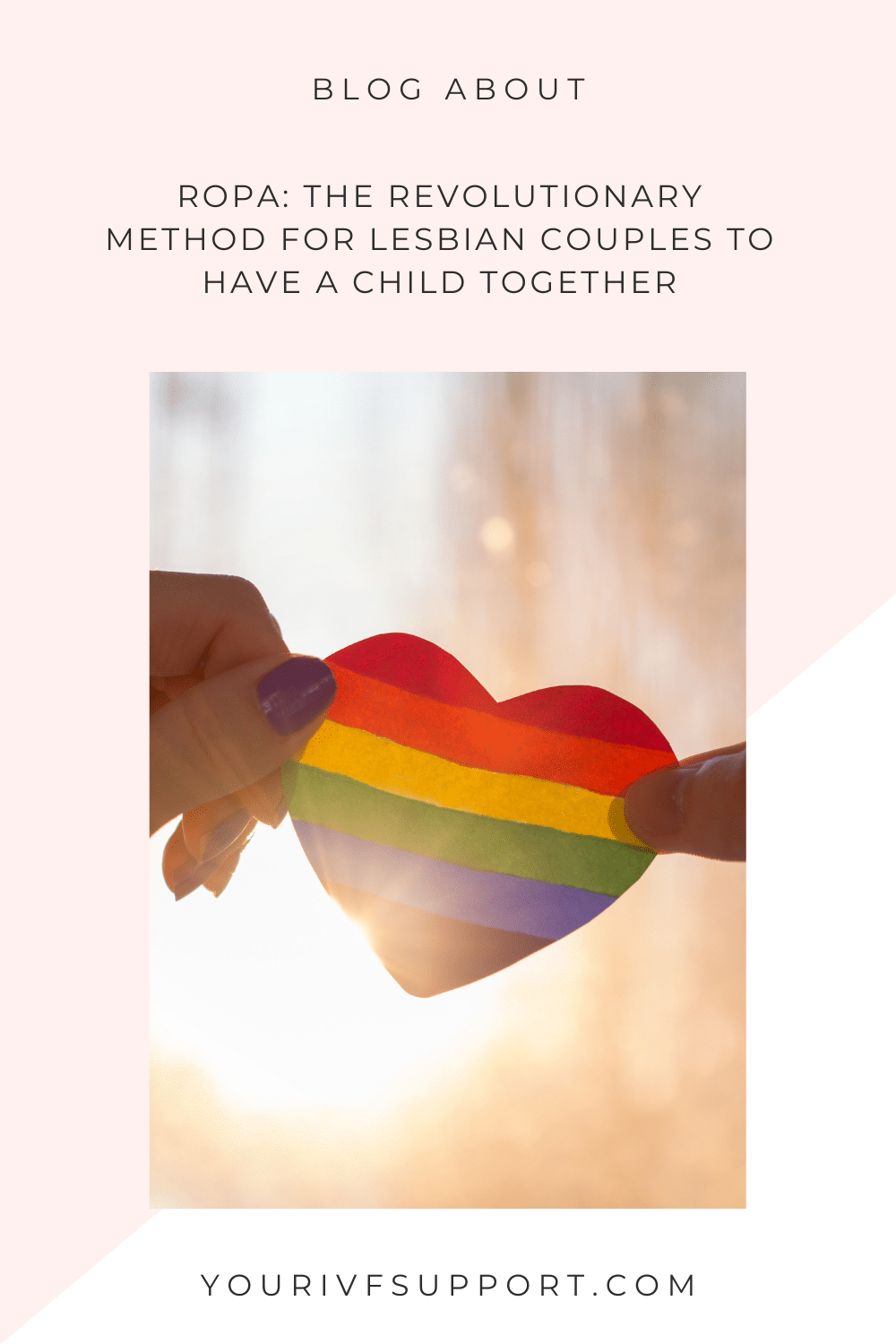
Choosing a fertility clinic for ROPA
Choosing a fertility clinic for the ROPA method is an important step on the way to fulfilling the desire for a child in lesbian couples. There are many clinics in Europe that offer the ROPA method. However, choosing the right clinic can be challenging as there are many factors to consider. Here are some important aspects to consider when choosing a fertility clinic for ROPA in Europe.
What are the most important criteria when choosing a fertility clinic?
If you and your partner are considering the ROPA method for your family planning, it is important to find a fertility clinic that can perform this treatment. But what should you look for when choosing a clinic?
First of all, you should check whether the ROPA method is even allowed in your chosen country. In some European countries, such as Germany or Switzerland, ROPA treatment is prohibited by law. Other countries, such as Spain or Northern Cyprus, allow it.
Once you have found a country that allows the ROPA method, you should research the different fertility clinics in that country. You should pay attention to the following criteria:
Experience:
Look for clinics that have experience in performing the ROPA method. An experienced clinic can offer you a higher level of safety and comfort.
Equipment: Check if the clinic has modern equipment and technology. This can increase the success rate of the treatment.
Reputation:
Look for clinics with a good reputation and positive reviews. Online forums and review sites can be a good source of information.
Cost:
Find out about the cost of treatment and compare the prices of different fertility clinics. Note, however, that the price is not always an indication of the quality of the treatment. Look out for hidden costs and ask which treatments have to be paid for additionally.
Distance:
Keep in mind that you may need to make several visits to the clinic. Look for clinics that are easily accessible for you and your partner.
Choosing the right fertility clinic can have a big impact on the success of your ROPA treatment. Take time to research the different clinics and make an informed decision.
Where can I find a list of fertility clinics that perform ROPA?
I would be happy to help you find a suitable fertility clinic for the ROPA method. I have extensive experience and expertise in this field and have personally visited many clinics in recent years.
During my visits, I have had intensive discussions with the doctors and medical staff and have thus been able to get a comprehensive picture of their working methods, technological equipment and success rates.
Some doctors even accompanied me on my trips to support me during the visits and to give me detailed information about the fertility clinics and their work.
Based on this experience and knowledge, I can assist you in choosing the right clinic for the ROPA method and specifically address your individual needs and wishes.
Please feel free to contact me for further information and to clarify your questions.
Challenges and possible disadvantages
The ROPA method is a promising option for lesbian couples who want to have a child together. However, there are some challenges and potential disadvantages that need to be considered.
One possible disadvantage of the ROPA method is that it can be very expensive. This is because there are several steps and procedures involved in donating the egg and sperm, fertilising the egg and implanting the embryo in the partner's uterus. These procedures can be very expensive and are not usually covered by health insurance.
Another possible disadvantage is the emotional stress that can be associated with ROPA treatment. Treatment can be very long and complicated, often involving many visits to the doctor and tests. There may also be disappointment if the treatment is not successful and the partner is unable to become pregnant.
It is also important to know that not every partner is suitable as an egg donor. This may be for health or other reasons. It is therefore advisable for the couple to seek detailed advice from a doctor before deciding to use the ROPA method.
Another potential problem with ROPA treatment is the dependence on the egg or sperm donor. If the donor is unavailable or no longer has suitable eggs or sperm, it may be difficult to achieve another pregnancy using the ROPA method.
It is important to be aware of these challenges and possible disadvantages and to seek advice from a qualified doctor or counsellor before choosing the ROPA method. It is also advisable for the couple to have sufficient support from friends and family to cope with the emotional stress of the treatment.
Legal issues after the birth
This section deals with the legal issues that need to be considered after a lesbian couple has had a child using the ROPA method. As laws and regulations can vary from country to country and region to region, it is important to find out about the applicable regulations in advance to avoid potential problems.
After the birth of a child using the ROPA method, both mothers usually have the right to be recognised as parents. However, recognition of parental rights can vary from country to country.
In some countries, such as Austria, both women are recognised as legal parents immediately after the birth of the child, without the need for an adoption or other court decision. In other countries, such as Germany or Switzerland, the non-birth mother or the partner of the birth parent must adopt the stepchild.
It should be noted, however, that legal recognition of parenthood does not necessarily correspond to biological kinship. In some countries where recognition of parenthood is based on biological relationship, it may be more difficult to recognise the non-biological mother.
In any case, it is advisable to find out about the legal provisions in the country concerned before the birth of the child and, if necessary, to seek legal assistance to ensure that both mothers can fully recognise and exercise their parental rights and responsibilities.
Conclusion
The ROPA method is a revolutionary way for lesbian couples to have a child together. Both partners can actively participate in the pregnancy and birth of their child and retain their biological parenthood. Choosing the right fertility clinic is very important as it can influence the success of the treatment.
However, there are also challenges and possible disadvantages, such as the cost of treatment, the possibility of overstimulation and the psychological stress of the process. There are also legal issues to consider, especially when it comes to the recognition of both mothers after the birth.
Nevertheless, there are many couples who have successfully had a child and enriched their family life with the help of the ROPA method. If you are considering using this method, I recommend that you read up on the pros and cons and seek advice from experienced professionals.
I hope this article has given you an overview of the ROPA method. If you have any further questions or need help finding a suitable fertility clinic, please do not hesitate to contact me.
